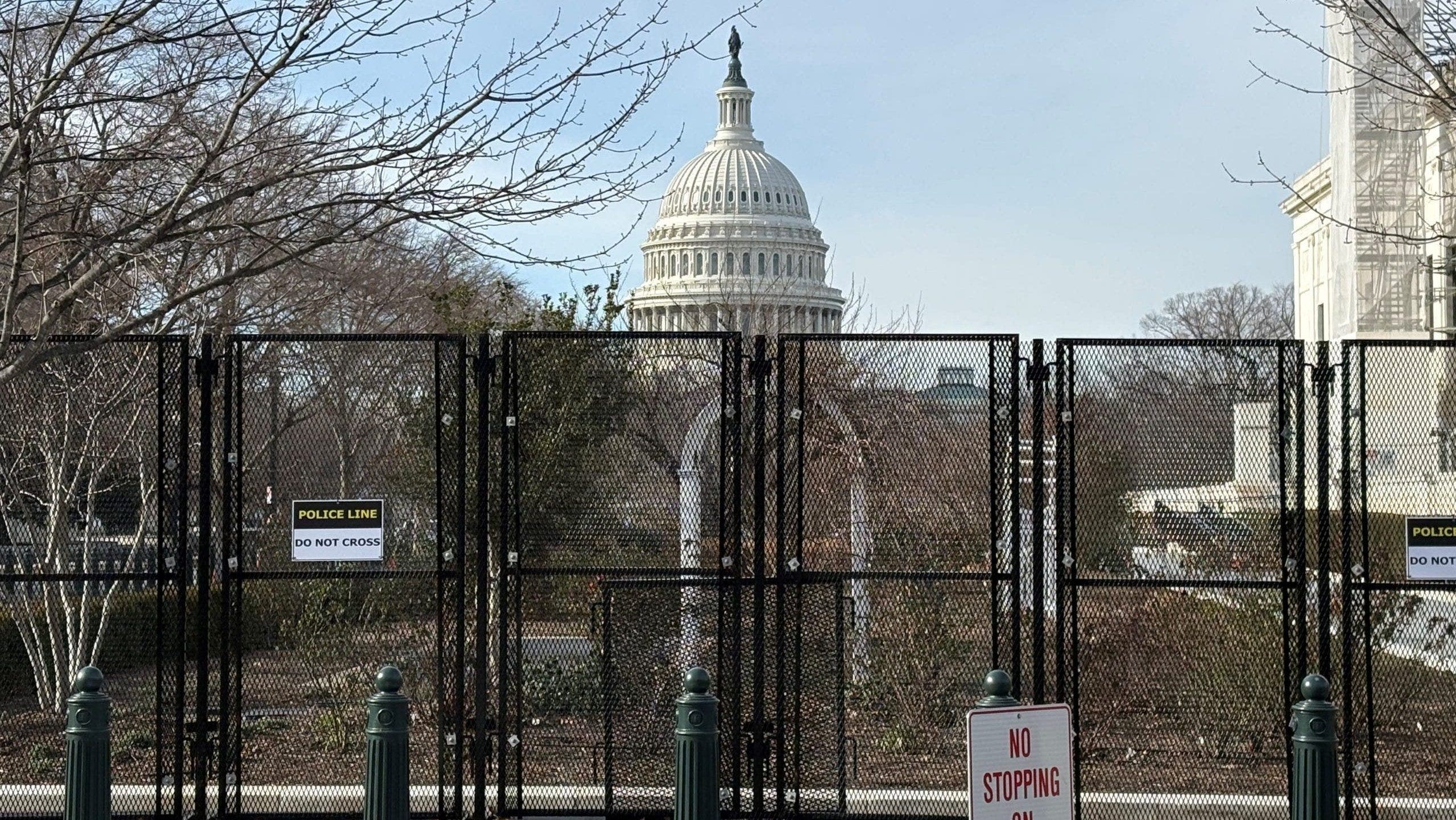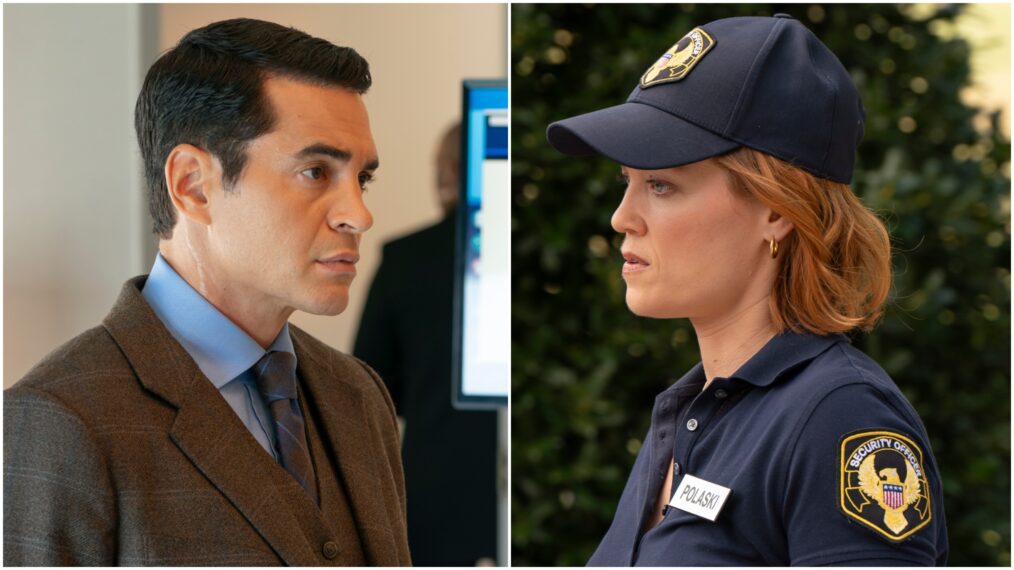Before we get started, please remember that by clicking this link — Evil Season 3 Episode 5 — you’ll get a full episode recap with details.
Here, we’re going to analyze and wax poetic about what’s on the minds of our assessor team, their allies, and their enemies because there is a whole lot to discuss!
“The Angel of Warning” continues the conversation surrounding faith and evil and reminds us of what an anomaly David is within the Church.
The story of David’s rarity begins with the building collapse, as he’s mistaken multiple times as a cop. Nobody expected a black priest; even with all the other religions present, it wasn’t a thought.
It’s a theme that I hope is explored in more detail. David’s Catholic origin story is integral to his priesthood. But being the odd man out allows him to see things from a unique perspective.
His role as an assessor perfectly suits that status.
On Evil Season 3 Episode 4, Kristen planted the seed about the third man season early. There was no doubt that would be her first thought when the survivors’ encounters with a woman holding a lamb leading them out came to light.
It’s aggravating to think the Church would hope to find a specific angelic figure at the root of the visions. The case got more grating as it unfolded, and it dovetailed brilliantly with Sister Andrea’s plight.
Ben: Do you want us to investigate if a dead Sicilian nun came to Brooklyn to save people?
Monsignor: Yes. Here’s her picture. She was called the Sister of the Lambs; she tended to a local flock. She said Jesus told her to. The Vatican would be very happy if that’s who the survivors saw.
David, Kristen, and Ben were tasked with questioning the survivors, and three of them had very similar visions. The only difference was that one survivor, a black woman, saw a black angel, while the other two saw white angels.
That hit home for David, too. Another thing that originated on “The Demon of the Road” was David seeing angelic visions that looked like pages out of the bible or paintings by Michelangelo.
Sister Andrea: I don’t understand the problem, David.
David: All of my visions, every single one, I see the angels as white, and the devil as black.
Sister Andrea: And so?
David: But if I’m influenced by the religious art of Michelangelo and Fra Angelico, then they’re not visions! They’re just a function of my mind!!
Sister Andrea: David, you’re creating a problem where there isn’t one, These visions are real. They are!
David: Really? Angels are white.
Sister Andrea: Don’t you try to turn this into a political issue.
David: Oh, please. Don’t you talk that way to me too, Sister.
Sister Andrea: What way? This isn’t a race issue; this is a religious one.
David: Then why did I have a vision tonight, and the angel I saw as white, is now black?
Sister Andrea: Now you’re talking like a newspaper editorial, David.
David: You say that because you’re white.
Sister Andrea: I say that because I believe in God’s revelation, and so do you.
David: Sister, I followed these visions for the last five years because I thought they were real. Now, I’m not sure.
What if Sister Andrea and David are both right?
Even secular scientists sometimes agree that we are here by design. They just don’t equate that design with God. But what if God has designed our brains to be the conduit to him?
Michelangelo painted faith as he sees it, and Edina explained the angel of warning as she saw her. They could both be right. If the angel of warning isn’t a corporeal being, why can’t she appear to everyone with similar traits but different details?
It makes sense that God would appear to us as he believes we need to see him to believe. Perhaps that’s the comforting aspect of faith, if not religion.
Ordinary people don’t see visions of God or Jesus or angels (or demons), but those with honed connections do.
Similarly, the average everyday person doesn’t see evil outright, but once you get closer to the inner circle, it becomes clear that evil isn’t pretty.
Sheryl was suffering a similar affliction to David, but hers was corporeal. The Manager is a five-eyed beast of a man, hooved, naked, hairy, and stinky to those in the know. He’s a cross between Liam Neesen and Ted Dansen to everyone else.
David questions his faith because of how he’s processing visions, and I can only hope that Sheryl will question her connection to Leland and Makob after seeing The Manager.
As an aside, hopefully, everyone got the Ted Lasso reference. I don’t know about you, but I much prefer watching Hannah Waddingham’s Rebecca enjoy her biscuits to The Manager shooting bile onto his and noisily scarfing them right out of the box.
All of this played out while David acted in Sister Andrea’s defense during her tribunal — another view of God, angels, and demons.
Hopefully, you all caught my interview with Kurt Fuller about the good doctor being brought into the fold with this case and others.
If he isn’t the best witness for Sister Andrea’s case, at least we know he’s no longer a disbeliever. That’s huge.
And who can’t thank him for offering us all diagnoses of ourselves that we might have missed? Sister Andrea shows symptoms of oppositional defiant disorder and adult-onset conduct disorder, and I think I qualify, too!
Sister Andrea recognized in herself everything that Kurt attested to and pulled David back from pushing the demon issue. She didn’t want Kurt to be hurt by her tribunal.
A priest testified that he believes seeing a demon cavorting with a Cardinal is not just blasphemous but theological hubris. David’s cross direct revealed the man had never had a vision of his own.
It turns out theological hubris looks a lot like jealousy, which David easily pointed out when he revealed another tribunal priest was called to God when he saw Jesus walking around a lake.
You can’t charge the Sister with a theological crime if you’re unwilling to use that same charge against others. David, of course, took that a degree higher by lying to the tribunal.
Frankly, who could blame him? The whole thing was a joke.
The Monsignor was uptight over the idea of a black angel. Everyone allows demonic Leland to prance around the Church as if he’s ordained. Demons literally litter the halls.
When it was discovered that one of the four survivors was a liar in cahoots with Leland, Monsignor dropped the case immediately, claiming it called into question the entire matter.
David: Why is the church afraid of a black angel?
Monsignor: I think it’s time we moved on. You already have your next assessment. Candice Bergnaza, a 15-year-old girl, demonic possession and infestation. She’s been eating glass, and her bedroom has been making demonic noises.
Ben: Well, that sounds much safer.
Leland will be outplayed again and again, but he’ll never stop, and the Church shows no signs of believing that he’s the devil we know him to be.
Sadly, our assessors are infiltrated from all directions.
Sister Andrea has a demon following her around. Sheryl is actively trying to get rid of Andy. Leland is a Church confidante. Something’s got to give with this group.
The final scene between David and Sister Andrea was concerning.
That demon is privy to all of their conversations. We’ve seen Sister Andrea get rid of him before, but what if Leland’s prophecy that David shouldn’t trust the Sister is correct?
Whether through her own actions or merely by her trailing demon, Sister Andrea might make trouble for David and the others. The booping demon was so unsettling sitting atop her armoire that I’m not sure if we can trust Sister Andrea or not.
Then again, that’s precisely what Leland wants. He wants everyone to be leery of each other because, as a team, they’re a holy threat.
Carissa Pavlica is the managing editor and a staff writer and critic for TV Fanatic. She’s a member of the Critic’s Choice Association, enjoys mentoring writers, conversing with cats, and passionately discussing the nuances of television and film with anyone who will listen. Follow her on Twitter and email her here at TV Fanatic.




































































